Listed here are some of the terms used by the authors of the recipes: in Portuguese, in the Macau dialect or in Cantonese.
| A |
|---|
| açafrão | literally “saffron” but in Macanese cooking it invariably refers to turmeric (botanical name curcuma longa; in Cantonese wong keong), usually in powdered form | |
| açúcar pedra | rock sugar | |
| ade | duck | |
| ade salgado | Chinese salt duck (lap-ap in Cantonese) | |
| agar agar | seaweed extract used to make jelly | |
| aletria | vermicelli (fan si in Cantonese)
|
| alho | garlic | |
| aluar, alua | a rich Macanese sweet |  |
| ajinomoto | monosodium glutamate (MSG) | |
| amargoso, margosa | bitter melon/gourd (botanical name momordica charantia; in Cantonese foo kwa) |  |
| B |
|---|
| bacalhau | salt cod | 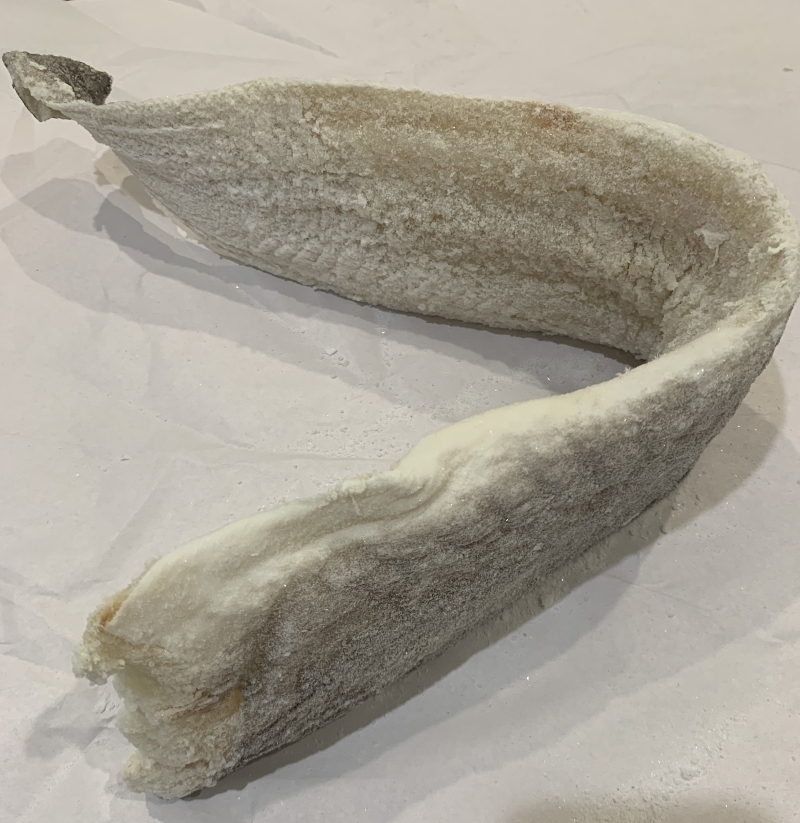 |
| balichão | a unique Macanese condiment made from krill | |
| brinjela | eggplant, aubergine |  |
| C |
|---|
| cabidela, capidela | cooked in its own blood (literally, “giblets”) | |
| camarão (pl. camarões) | prawn, shrimp or, for balichão, krill | |
| canje | congee (chôk in Cantonese), rice broth | |
| caranguejo | crab | |
| catty | Chinese unit of weight, approximately 605g | 1lb 5oz | |
| cebola mato | pickled spring onion bulbs, often called pickled leeks (kiu tao in Cantonese) | |
| cha siu | Chinese red roast pork | |
| chilicote | a small savoury pastry filled usually with mince meat | |
| chili miçó | hot red chilli sauce | |
| chi ma yao | sesame oil | |
| Chinese celery | fresh coriander (botanical name Coriandrum sativum; in Cantonese insai) | 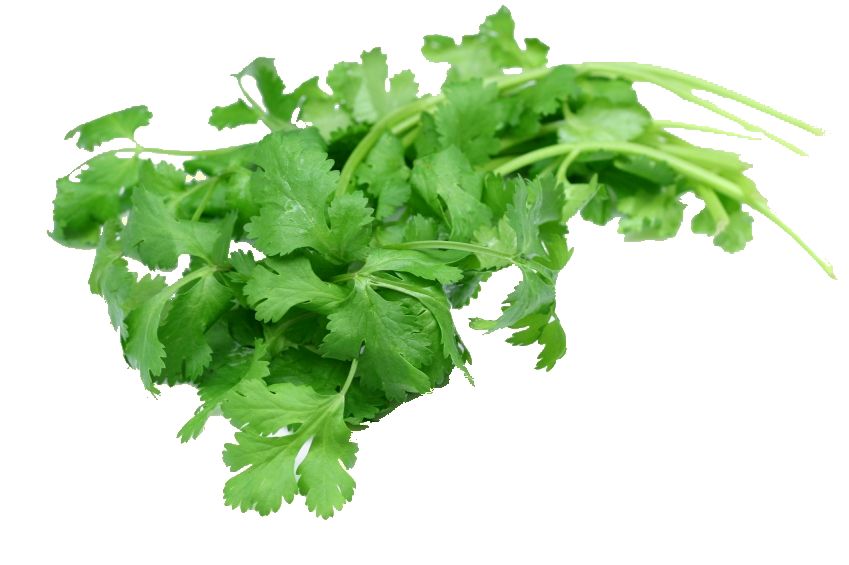 |
| choco | squid (in Portuguese choco is cuttlefish and lula is squid) | |
| chouriço and paio | in Portugal both are smoked pork sausages: paio is large with lean meat whereas chouriço is smaller with fat content and paprika. Macanese call chouriço paio. (In editing these recipes, Guilly’s paio has been changed to chouriço.) | |
| coentro | coriander (usually powdered) | |
| colorau | paprika | |
| colorau doce | sweet paprika | |
| cominho | cummin (usually powdered) | |
| costela | rib | |
| costeleta | chop | |
| cucuz, cucús | steamed | |
| F |
|---|
| fan si | vermicelli |
| favas | beans | |
| frango | chicken | |
| frito | fried | |
| G |
|---|
| gamba | shrimp | |
| grelhado | grilled | |
| gergelim | sesame seeds | |
| I |
|---|
| inhame | normally this will refer to small taro (in Cantonese woo chai) but occasionally also to the larger taro (woo tao) |  |
| inhame chicoo | a small, very astringent-tasting taro (chicoo in Cantonese) | |
| insai | coriander | |
| insaifan | coriander powder | |
| iscas | liver | |
| J |
|---|
| jagra | Chinese brown sugar in caramel-coloured slabs. The term comes from the Indian word jaggery for half-prepared sugar, which passed through Malay to Macanese. | |
| K |
|---|
| kai choi | mustard green | 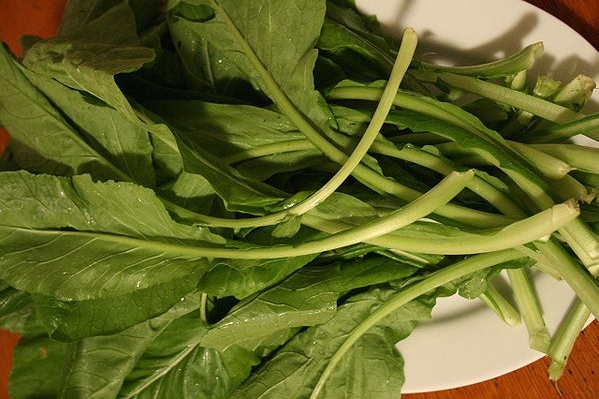 |
| kai lan choi | Chinese broccoli | 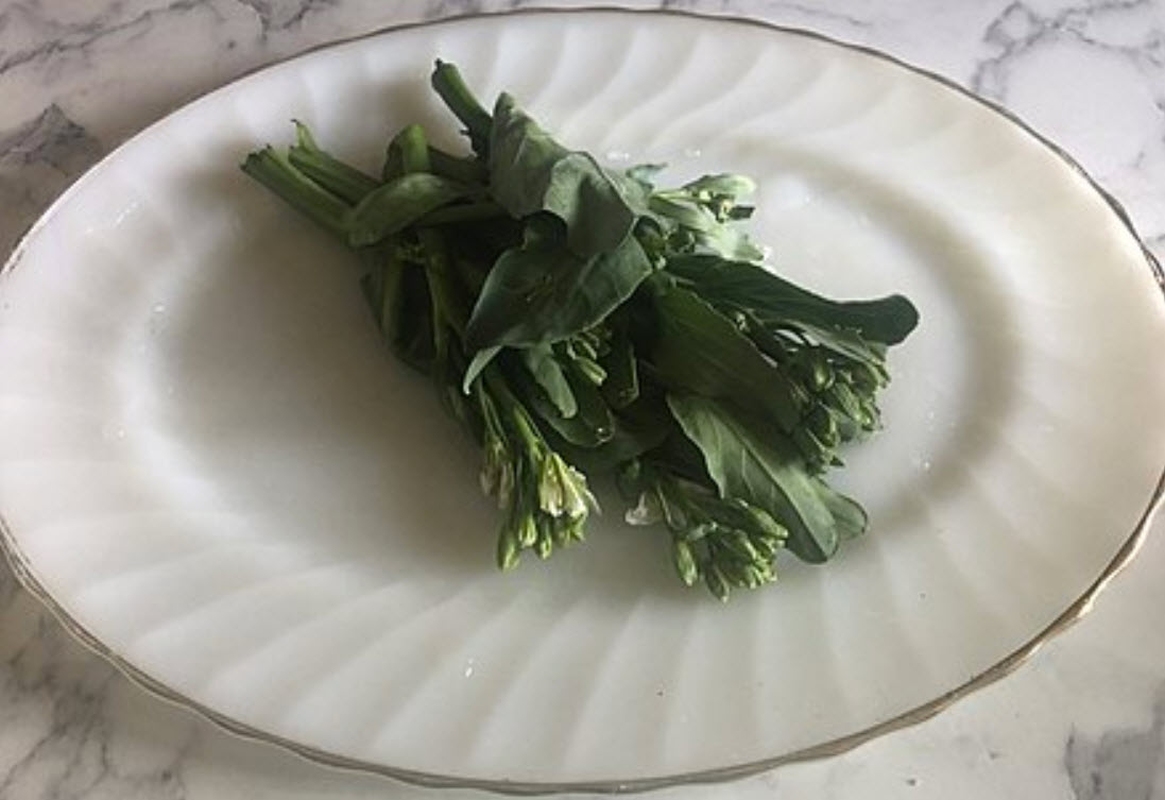 |
| krill | tiny shrimp-like crustacean (ngun har in Cantonese) | |
| L |
|---|
| lagosta | lobster | |
| lap cheong | Chinese pork sausage | 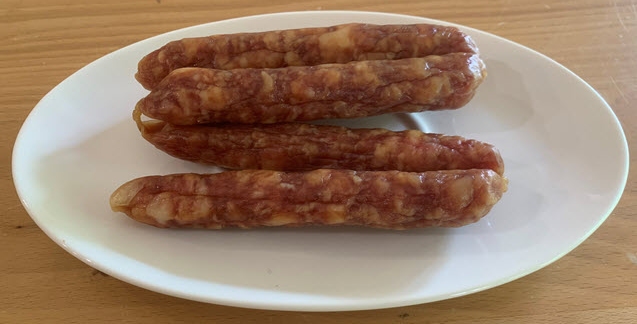 |
| lap yôk | Chinese roast pork | |
| leeks, streaks of leek | spring onions, scallions (botanical name Allium fistulosum) |  |
| lula | squid | |
| M |
|---|
| mela miçó | this is reported to be sweet pickled cucumber but we have found no recipe for it. | |
| mui garganta | Chinese sour and salt plum (wah mui) | |
| N |
|---|
| nabo | turnip (but used to denote daikon (also called Chinese white radish) |  |
| nervo | the tough parts of meat – gristle, etc. | |
| nervo de vaca | the Achilles tendon at the lowest part of the cow’s calf muscle that turns translucent (gelatinous) when cooked (in Cantonese, ngau kun) | |
| O |
|---|
| orelha de rato | literally, “rat’s ear” – dried black fungus or cloud ear fungus (botanical name Auricularia polytricha, vinyee in Cantonese) available from Asian grocers. It needs to be soaked. |  |
| P |
|---|
| paio and chouriço | in Portugal both are smoked pork sausages: paio is large with lean meat whereas chouriço is smaller with fat content and paprika. Macanese call chouriço paio. (In editing these recipes, Guilly’s paio has been changed to chouriço.) | |
| pai quat | pork cutlet | |
| papa | (gruel) very thick rice porridge, pronounced pápa | |
| passas | raisins | |
| pastel (pl. pasteis) | pastry | |
| peixe cabuz | a small fish commonly found by the riverbank | |
| peixe serra | saw fish | |
| pele, pele torado | dried puffed pork skin (chee pei kohn in Cantonese). (This ingredient, unobtainable in some countries that ban meat imports, vaguely resembles pork crackling. Many insist it is an essential ingredient of tacho.) | 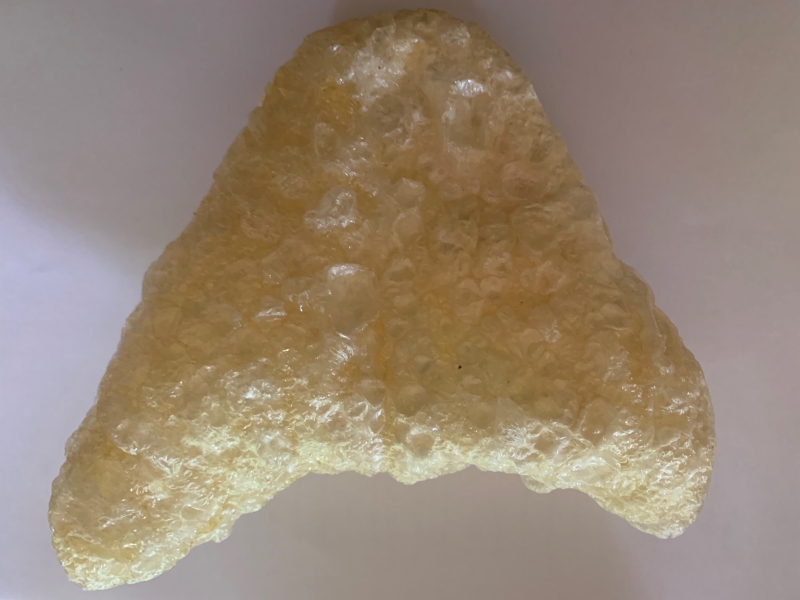 |
| peng tong | rock sugar | |
| polvo | octopus | |
| porco pó de bolacha | crumbed pork loin chop | |
| porco salmourado | pickled (salted) pork | |
| porco vinho d’alho | pork cooked in garlic and wine | |
| pudim | pudding | |
| pulú | glutinous rice | |
| R |
|---|
| rabono | daikon, Chinese turnip, white radish or icicle radish (botanical name Raphanus sativus, Cantonese lo pak | |
| S |
|---|
| salitre | saltpeter | |
| salsa | parsley | |
| sardinha | sardine | |
| shrimps | these might be called prawns in some countries | |
| siu yôk | Chinese roast pork | |
| sutate | soy sauce; there are two varieties: light (sang chau or pak see yau) and dark (lo chau or hak see yau) | |
| T |
|---|
| tai chong | a type of pastry prepared from dark brown beans | |
| tamarinho, tamarindo | tamarind | |
| tau fu mui | white fermented soy beans, in cubes, sold in jars, often spiced with chilli | |
| tiffin | lunch | |
| tong ku | shitake mushrooms, often in dried form |
| toresmo | pork crackling | |
| toucinho | bacon | |
| V |
|---|
| vaca estufada | pot roast beef | |
| vaca salgada | salt beef | |
| vantan | wonton – small Chinese dumplings | |
| vantan pei | wonton skins – thin pastry for wrapping wonton, obtainable from Chinese grocers. | |
| W |
|---|
| winter melon | also called white gourd or ash gourd (botanical name Benincasa hispida, tong kwa in Cantonese) |  |
| wombok | Tientsin cabbage, also called Napa cabbage (botanical name Brassica Pekinensis) | |